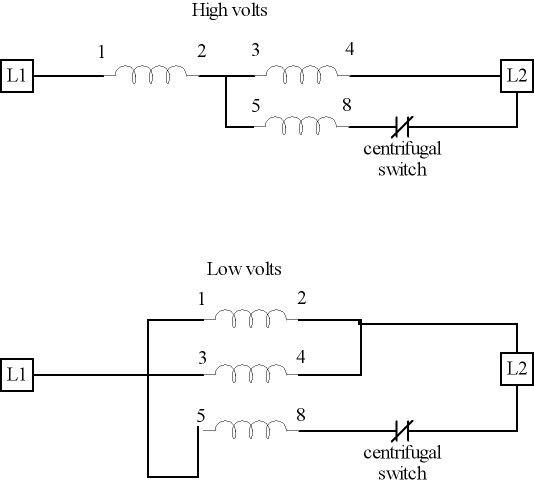i have a Single phase, split phase motor 1/3hp wired for 220Volt operation. When It starts it will not develop much starting torque, and almost takes the full 6 seconds to click in the centrifugal switch.
When it clicks in it seems to have the full Hp rating available.
If I rewire the motor for low voltage and plug it in to a 120Volt outlet it runs fine and clicks in the switch in 1-2 seconds.
I have tried several motors with the same response..
Whats going on? How do I make my motor run?
Clues.. I have a 3 phase corner grounded supply 230Vac. I am using 1 leg and the corner grounded leg. The corner grounded is connected to the L2 terminal. L1 is the ungrounded wire as specified on the nameplate. I measure 230 across the 2 wires. I do not want use the two ungrounded legs for safety. Since it is a corner grounded delta, low voltage is not available from this source.
When it clicks in it seems to have the full Hp rating available.
If I rewire the motor for low voltage and plug it in to a 120Volt outlet it runs fine and clicks in the switch in 1-2 seconds.
I have tried several motors with the same response..
Whats going on? How do I make my motor run?
Clues.. I have a 3 phase corner grounded supply 230Vac. I am using 1 leg and the corner grounded leg. The corner grounded is connected to the L2 terminal. L1 is the ungrounded wire as specified on the nameplate. I measure 230 across the 2 wires. I do not want use the two ungrounded legs for safety. Since it is a corner grounded delta, low voltage is not available from this source.
Last edited:


